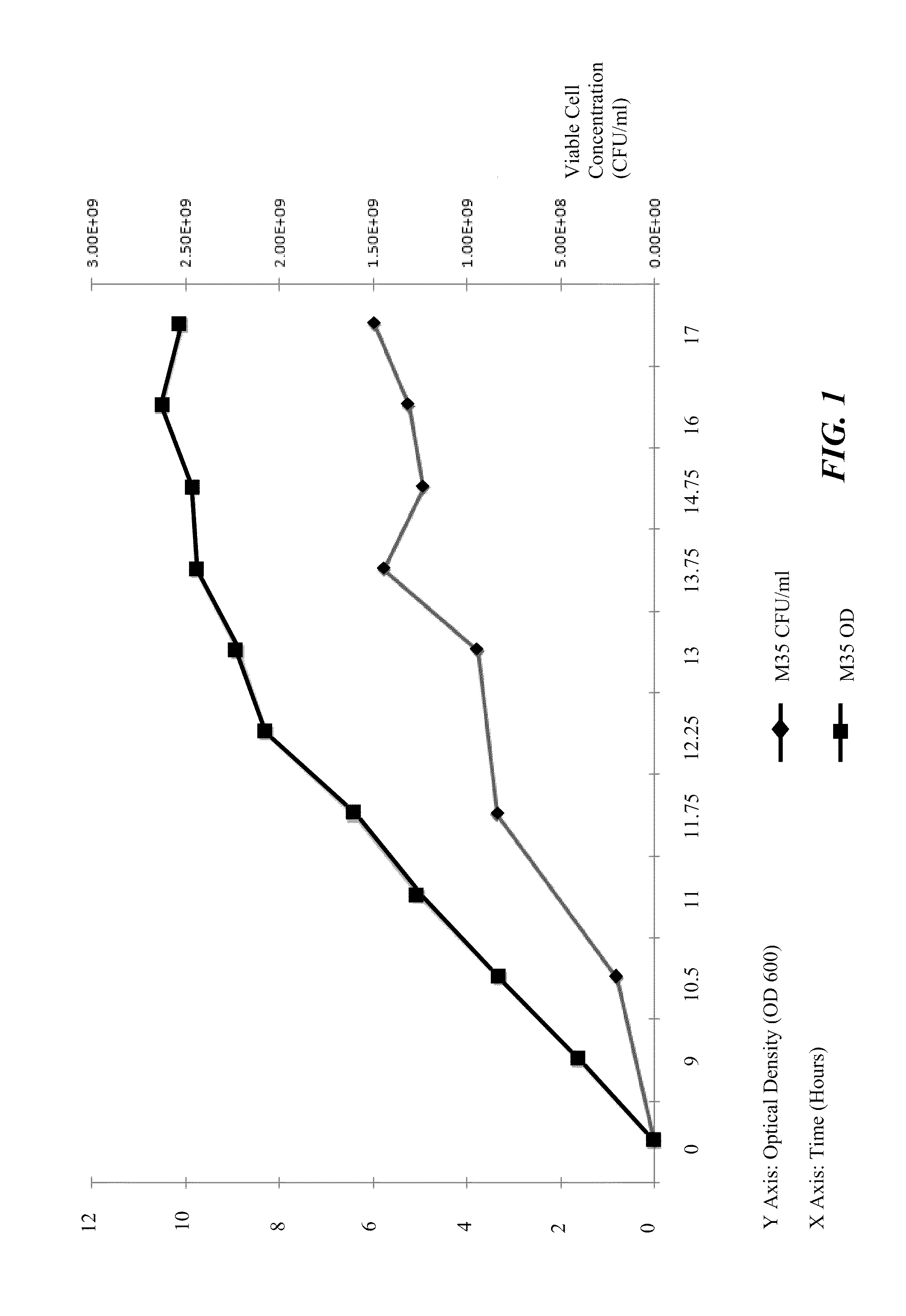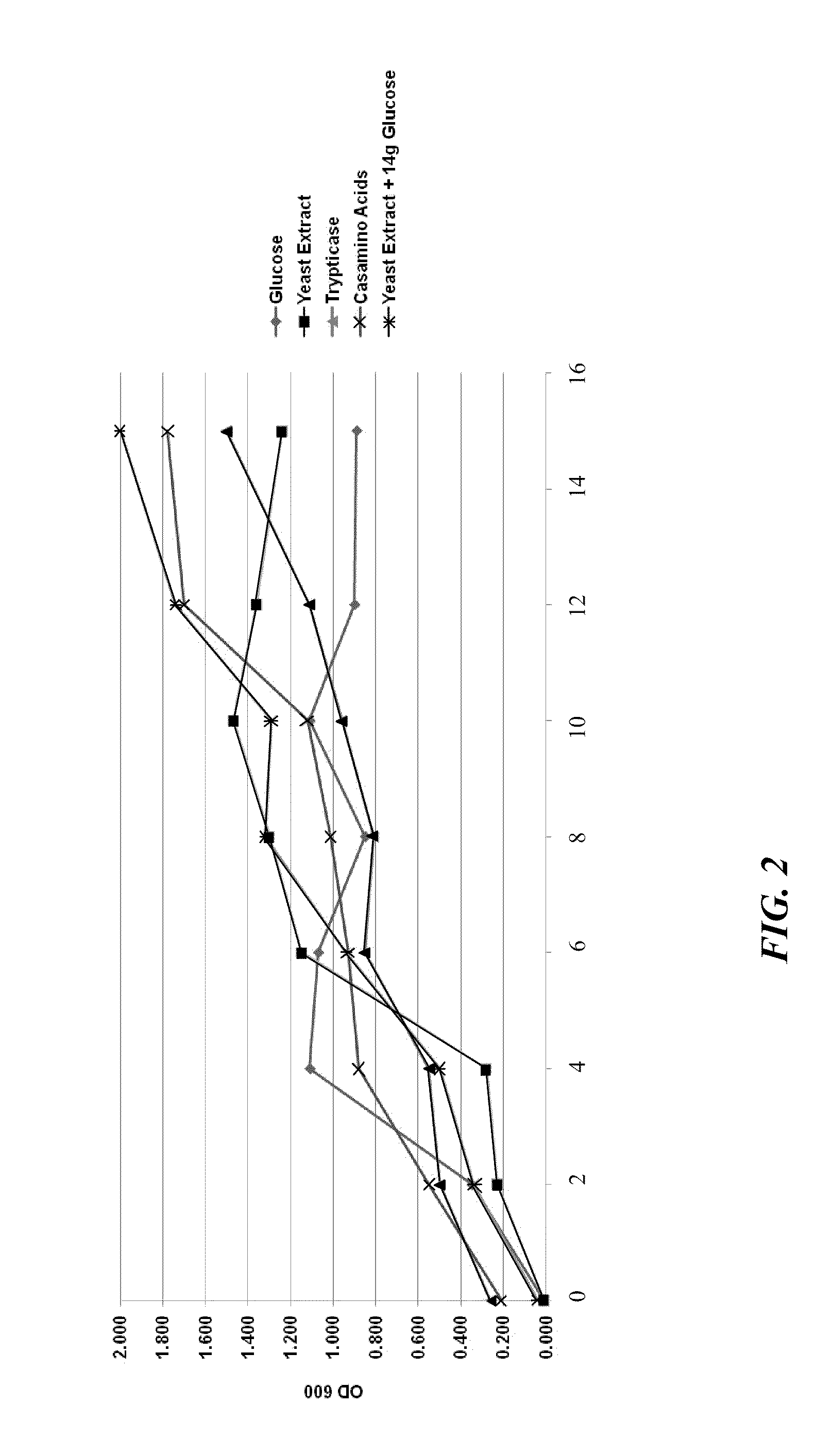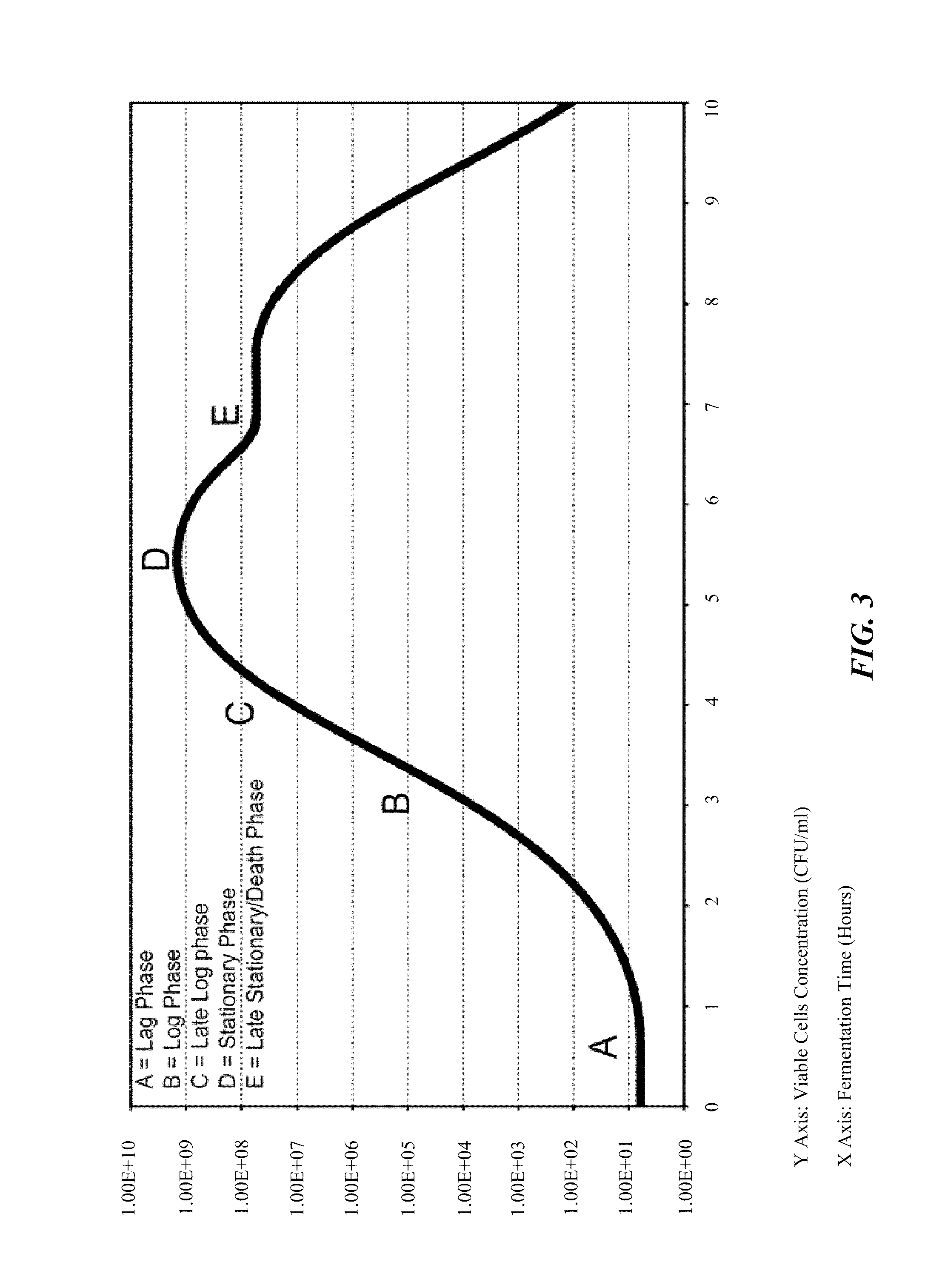Process and composition for the manufacture of a microbial-based product
a technology of microbial-based products and compositions, which is applied in the direction of bacteria-based processes, biochemical apparatus and processes, microorganisms, etc., can solve the problems of insufficient viable, rapid loss of viable cells of dfm products, and cost-intensive process for producing microorganisms
- Summary
- Abstract
- Description
- Claims
- Application Information
AI Technical Summary
Problems solved by technology
Method used
Image
Examples
example 1
Preparation of Reagents
[0153]a. Lactobacilli MRS Agar and Broth
[0154]Lactobacilli MRS agar and broth are recommended for the use in the isolation of Lactobacillus species. Lactobacilli MRS agar and broth are based on the formulations of de Man et al., J. Appl. Bacteriol., 23:130, 1960. Difco™& BBL™ Manual, 2nd Edition. The agar and broth were demonstrated by de Man et al., to support Lactobacilli growth from oral, fecal dairy and other sources. Lactobacilli MRS Agar and broth contain peptone and dextrose, both of which supply nitrogen, carbon and other elements necessary for growth. Polysorbate 80, acetate, magnesium and manganese provide growth factors for culturing a variety of lactobacilli.
[0155]In brief, to generate Lactobacilli MRS Agar, into one liter of distilled water: 10.0 g proteose peptone No. 3, 10.0 g beef extract, 5.0 g yeast extract, 20.0 g dextrose, 1.0 g polysorbate 80, 2.0 g ammonium citrate, 5.0 g sodium acetate, 0.1 g magnesium sulfate, 0.05 g manganese sulfate, ...
example 2
Lactobacillus amylovorus M35 Fermentation Protocol
[0160]a. Medium Optimization for Strain M35 Protocol
[0161]450 ml of the Lactobacilli fermentation medium was adjusted to a pH of 7.20 with 6M sodium hydroxide and a stir bar was added to the bottle. The medium was autoclaved for 20 minutes at 121° C. After the fermentation medium was cooled, to room temperature, 50 ml of a sterile 30% glucose solution was added aseptically.
[0162]The fermentation medium was pre-warmed to 37° C. in a water bath then inoculated with 5 ml of an overnight culture of Lactobacillus amylovorus M35 previously grown in MRS broth. The concentration of a typical overnight M35 culture is about 5×108 CFU / ml of culture. Therefore, ˜2.5×109 total cells were inoculated to the vessel. The bottle was sealed and then placed into a water bath at 37° C. The cap on the bottle had two holes in the top, one large enough to allow a pH probe to pass through and one hole large enough to pipette 6M sodium hydroxide. Unless pH me...
example 3
Carbon Source Pulsing
[0170]An inoculation culture of 5 L will be grown on fermentation medium supplemented with 6 g / L glucose (or another appropriate carbon source), alternatively the glucose concentration may be even higher, such as 36 g / L. Once the inoculation culture reaches a sufficient viable cell count (e.g. cells have reached mid logarithmic phase) the 5 L inoculation culture is added to a 500 L fermentor. Previously, a sterile 50% glucose solution (or another appropriate carbon source) was added to 500 L of fermentation medium to bring the glucose to a final concentration of 4 g / L. The pH of the fermentation medium will be adjusted to 6.5 with ammonium hydroxide. The pH of the medium will be constantly monitored and adjusted to 6.5 with the addition of ammonium hydroxide. The culture will be incubated until optical density of the culture begins to slow, at which time 2 g / L of glucose will be added to the medium. Alternatively a piezoelectric sensor or sensors could be employ...
PUM
| Property | Measurement | Unit |
|---|---|---|
| temperature | aaaaa | aaaaa |
| temperature | aaaaa | aaaaa |
| temperatures | aaaaa | aaaaa |
Abstract
Description
Claims
Application Information
 Login to View More
Login to View More - R&D
- Intellectual Property
- Life Sciences
- Materials
- Tech Scout
- Unparalleled Data Quality
- Higher Quality Content
- 60% Fewer Hallucinations
Browse by: Latest US Patents, China's latest patents, Technical Efficacy Thesaurus, Application Domain, Technology Topic, Popular Technical Reports.
© 2025 PatSnap. All rights reserved.Legal|Privacy policy|Modern Slavery Act Transparency Statement|Sitemap|About US| Contact US: help@patsnap.com



